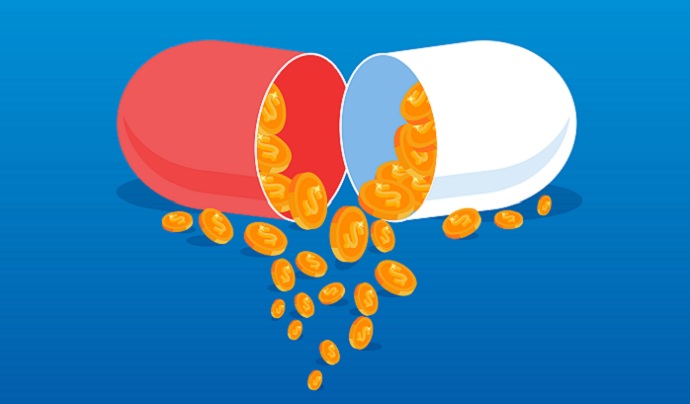90% of Value-Based Payments in Commercial Sector Based on FFS
Only 6% of total commercial dollars as of 2017 came from a value-based payments model with downside financial risk, Catalyst for Payment Reform found.

Source: Getty Images
- The proportion of value-based payments from the commercial sector to physicians and hospitals increased from 10.9 percent in 2012 to 53.0 percent in 2017. However, an overwhelming majority of those alternative payments were built on a fee-for-service foundation.
Those were the findings captured in the latest National Scorecard on Payment Reform, released in December 2019 by the Catalyst for Payment Reform (CPR), an independent, non-profit corporation dedicated to improving the value of healthcare services with the help of over 30 employers.
Funded by the Robert Wood Johnson Foundation, the Scorecard examined data from the National Alliance of Healthcare Purchaser Coalitions’ eValue8 health plan survey to evaluate the commercial sector’s progress with value-based payment implementation.
This year’s Scorecard, which analyzed data between 2012 and 2017, revealed little progress with the implementation of value-based payments that will likely transform healthcare. The Scorecard showed that 90 percent of value-based payments as of 2017 were based on fee-for-service, while just six percent of total dollars stemmed from an alternative payment model that put downside financial risk on providers.
“The results of these analyses are disappointing and a wake-up call that we are moving too slowly and essentially missing the mark,” Robert S. Galvin, MD, CEO of Equity Healthcare and chair of the CPR Board, stated in a press release. “Not all payment reforms are equally effective and it’s time to put our energy toward payment methods that don’t rely on fee for service but, instead, empower health care providers to manage our populations and assume financial risk for their performance.”
READ MORE: Partners, Patients Key to Achieving Value-Based Care Results
Alternative payment models with downside financial risk for providers have been sparse in the commercial sector. The Scorecard showed that the proportion of total dollars flowing through one of these models has remained relatively stable since 2012 when it was 5.7 percent.
Instead, payers and providers have been investing in pay-for-performance, shared savings, and other value-based payment models with a fee-for-service foundation.
The Scorecard showed early investments in pay-for-performance, with 12.8 percent of payments stemming from one of these models in 2014. That percentage increased to 16.6 percent of payments by 2017. However, shared savings arrangements outpaced the models by that time.
Most value-based payments (29.7 percent) made in the commercial sector in 2017 were part of a shared savings arrangement, the Scorecard found. Shared savings arrangements were also the most popular form of value-based payment in 2016, with 23.7 percent of payments.
Notably, the proportion of payments made through a bundled payments model has remained flat since 2012 when 1.6 percent of dollars paid to providers in the commercial sector came from a bundle. By 2017, only two percent of dollars stemmed from these models.
READ MORE: More States Require Value-Based Reimbursement in Medicaid
CPR pointed out that the rate of growth in payment reform was largest at the beginning of the period in 2012 but has since tapered off. From 2012 to 2013, the proportion of commercial dollars coming from a value-based payment model more than doubled from 10.9 percent to 27.1 percent. From 2016 to 2017, however, the percentage of value-based payments only increased from 48.5 percent to 53.0 percent.
Slow implementation rates in the commercial sector may be due to lackluster quality and cost improvements. The Scorecard found small improvements between 2013 and 2017 in the percent of commercially insured patients with diabetes who had their blood sugar measured with HbA1c tests (88.7 percent in 2012 and 90.5 percent in 2017), in the percent of patients given instructions on how to recover at home (85.0 percent in 2012 to 87.0 percent in 2017) and in the percent of children receiving recommended vaccinations (68.4 percent in 2012 to 70.4 percent in 2017).
However, the Scorecard also noticed modest increases in commercially insured patients with diabetes who had poorly controlled blood sugar (31.38 percent in 2012 to 36.44 percent in 2017) and hospital-acquired pressure ulcers (21.7 patients in the general patient population out of every 1,000 in 2014 to 23 out of every 1,000 in 2017).
Additionally, the rates of hospital readmissions and cesarean sections among women with low-risk births remained flat during the period.
Commercially insured patients also faced cost concerns despite value-based payment implementation, which is meant to lower costs to the system. In 2017, about 9.7 percent of these patients did not receive care because of cost concerns, and that percentage is up from about 7.5 percent in 2013.
READ MORE: Value-Based Payment Opens Doors for Better Opioid Use Disorder Care
“Given the growing recognition that high prices are the major reason health care costs continue to rise while the use of services remains flat, CPR’s view now is that it’s not real payment reform if it doesn’t address prices,” Suzanne Delbanco, PhD, executive director of CPR, stated in the press release.
Payment reform in healthcare has been a marathon, not a sprint. Payers and providers across the industry are struggling to finish the race as savings and quality improvements become harder to achieve.
